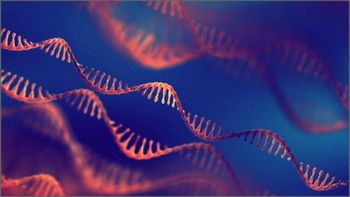
New Continuous Electrospray Ionization Mass Spectrometry Assay for Measuring Phospholipase Activity against Liposomes Developed
Scientists recently used continuous electrospray ionization mass spectrometry to study what makes the inland taipei snake venom so dangerous.
Researchers have developed a continuous electrospray ionization mass spectrometry (ESI-MS) assay to measure phospholipase A2 activity against liposomes. The assay was used to study the neurotoxic trimeric phospholipase A2 from inland taipan snake venom, paradoxin. Previously, ESI-MS-based phospholipase assays had been discontinuous and analyzed hydrolysis of single lipid molecules by liquid chromatography ESI-MS.
Liposomes are a more complex substrate that more closely reflects the natural substrate for paradoxin. The new assay confirmed the requirement for Ca2+ and allowed measurement of Michaelis–Menten-type parameters. The use of ESI-MS for lipid detection enabled nuanced insights into the effect of changing assay conditions not only on the enzyme but also on the liposome substrate.
The researchers found that changing the metal ion concentrations did not significantly change the liposomes but did affect enzymatic activity. Increasing temperature did not substantially affect the secondary structure of paradoxin but affected liposome size, resulting in increased enzymatic activity consistent with the disruption of the phosphatidylcholine membrane and increasing accessibility of sn-2 ester bonds.
The continuous ESI-MS method described in the study can be applied to other enzyme reactions, particularly those which utilize complex lipid substrates. Phospholipases have diverse roles in lipid and cell membrane biology and can have roles as neurotoxins or myotoxins that disrupt the integrity of cell membranes in animal venoms.
The development of this continuous ESI-MS assay provides a valuable tool for studying the activity of these enzymes against more complex substrates, allowing for a better understanding of their role in biology. The study, titled "Continuous Electrospray Ionization Mass Spectrometry Assay for Measuring Phospholipase Activity against Liposomes," was published in the Journal of the American Society for Mass Spectrometry (1).
Reference
(1) Harrison, J. A.; Kelso, C.; Beck, J. L. Continuous Electrospray Ionization Mass Spectrometry Assay for Measuring Phospholipase Activity against Liposomes. J. Am. Soc. Mass Spectrom. 2023. DOI:
Newsletter
Join the global community of analytical scientists who trust LCGC for insights on the latest techniques, trends, and expert solutions in chromatography.




